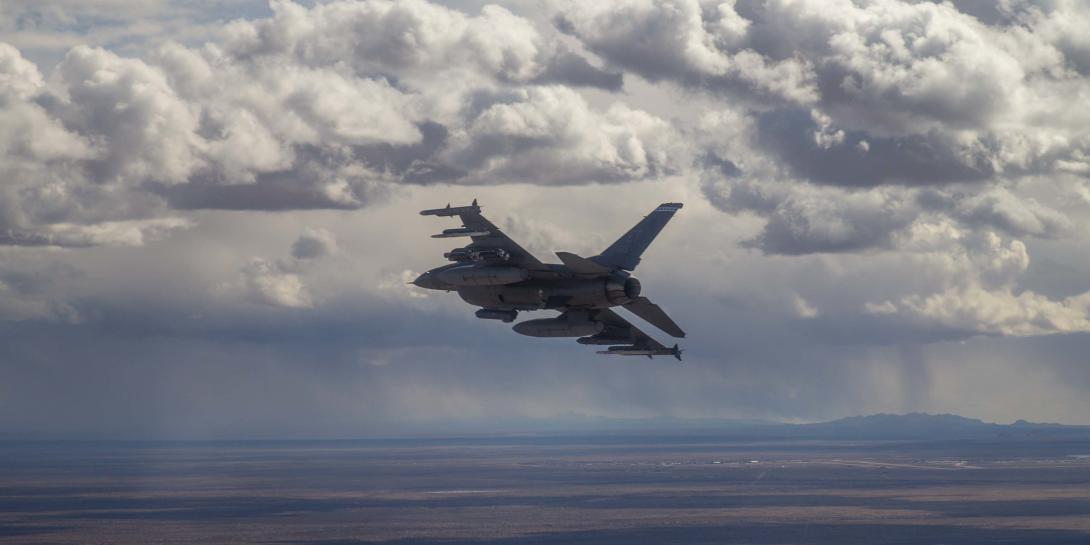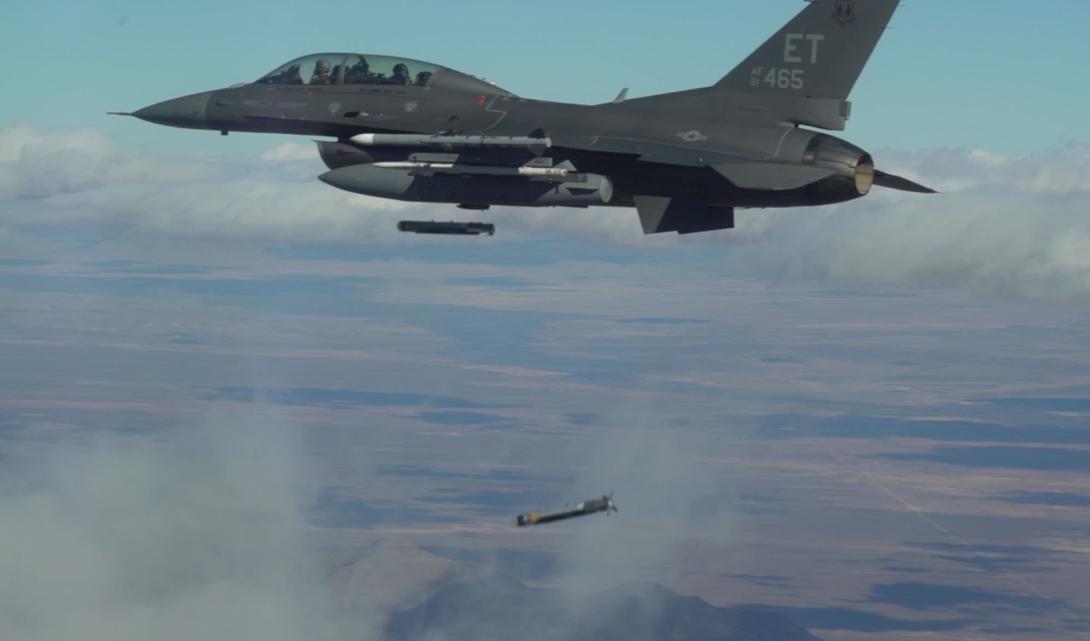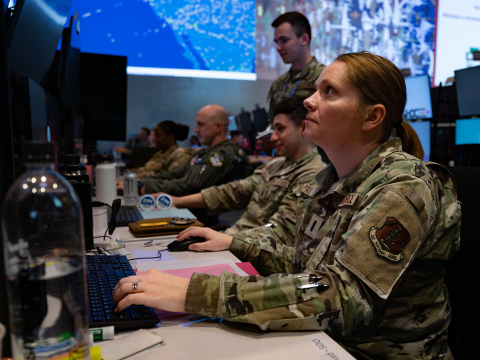Networked Munitions Take Flight
Four collaborative small diameter bombs successfully passed a recent second flight test, demonstrating a technology that enables weapons to respond rapidly to changes in their battlespace without real-time human intervention. The U.S. Air Force and the Air Force Research Laboratory (AFRL), in conjunction with industry, are developing networked collaborative autonomous technologies through the Golden Horde project, a Vanguard program.
As part of the effort, collaborative small diameter bombs (CSDBs) were modified with networked collaborative autonomy payloads. To date, the capabilities have been tested twice. During the second test, four CSDBs established communications with each other, identified a pop-up target and followed predetermined rules of engagement. They proceeded to evaluate and assign themselves to multiple targets, striking them in a time-synchronized manner.
New program objectives demonstrated during the latest test included a synchronized time-on-target attack behavior. A third and final CSDB flight test is scheduled to take place this spring, said Col. Garry Haase, commander and director, Munitions Directorate, AFRL, Eglin Air Force Base, in a recent interview with SIGNAL Magazine.
Weapon software problems revealed during the first demonstration also were resolved in the recent test. In addition, the military-industry team improved the integrated system performance and verified new software in hardware-in-the-loop simulations, he noted.
Previously, researchers at the AFRL were pursuing a more traditional approach to advancing the network collaborative autonomous capabilities. With the mandate last fall from Will Roper, former assistant secretary of the Air Force for Acquisition, Technology and Logistics, to embrace a new digital acquisition reality, AFRL engineers shifted course and employed digital tools so they can now deliver network collaborative autonomous solutions to warfighters sooner.
The Golden Horde program is now pivoting from inventory weapon demonstrations to developing and delivering a multi-tier digital weapon ecosystem: a live-virtual-constructive testing and demonstration capability known as the Colosseum. The capability will be a fully integrated simulation environment with weapon digital twins—a real-world weapon and a virtual clone—to test, demonstrate, improve and transition collaborative autonomous networked technologies faster.
The researchers’ efforts to develop network collaborative autonomous munition weapons systems stem from an AFRL program called Grey Wolf, a clean-sheet design, modular, open architecture platform, Col. Haase stated.
But Roper’s challenge triggered the team to examine Grey Wolf work, the colonel emphasized, and expedited their work on the network collaborative autonomous technologies. The engineers shifted gears from the longer, drawn-out serial development process they were using for Grey Wolf and changed the program’s name to Golden Horde. By taking the best components from joint capability technology demonstrations and repackaging the network collaborative autonomous technologies into the front part of a laser-guided small diameter bomb, progress ensued quickly.
The researchers are continuing to improve the three main elements of the CSDB: the networking, collaboration capabilities and autonomous systems. Enhancements in these areas would expand the use of the technologies to weapons, unmanned aerial vehicles and other systems, enabling them to operate in different environments autonomously in coordination with each other to defeat adversaries, Col. Haase said.
For the networking piece, the researchers are examining how the various platforms can communicate with one another. The scientists are looking at capabilities such as software-defined radios and different types of network features and connections both between weapons systems and the sensors. They are scrutinizing how the information is passed to the weapons systems or another sensor, the colonel suggested. “It gets to the ABMS [Advanced Battle Management System] kind of philosophy of everything talking to one another,” he added.
Additional details about the Golden Horde project will be in the May issue of SIGNAL Magazine.







Comments